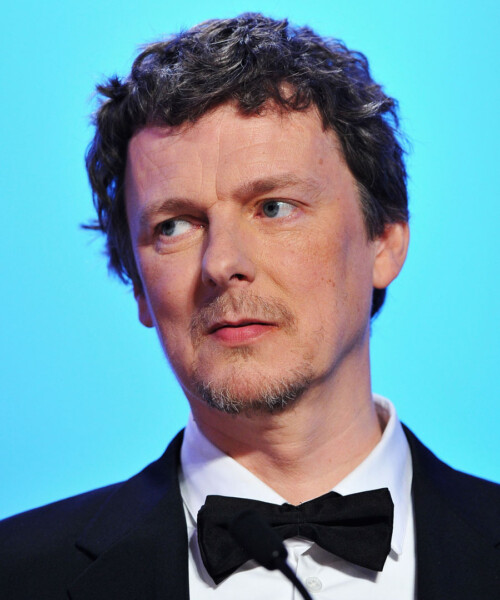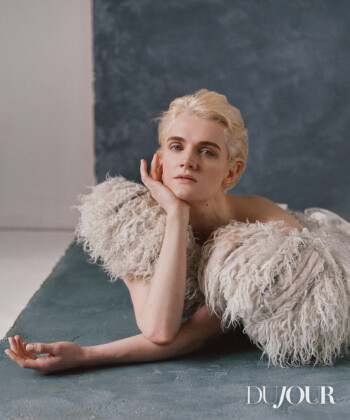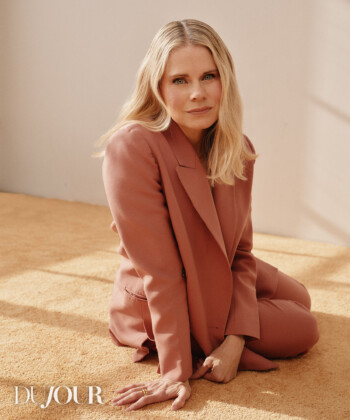Michel Gondry is no stranger to the offbeat. From the sweet sci-fi of his Oscar-winning 2004 film Eternal Sunshine of the Spotless Mind to the quirk of his (sometimes banned in America) commercials and his self-released cartoons, the French-born, Brooklyn-based director isn’t one to shy away from an unconventional idea. That taste for the eccentric is on display in Gondry’s latest, Is The Man Who Is Tall Happy?, premiering this week at the New York documentary festival DOC NYC.
The film features conversations between the director and philosopher, activist and linguist Noam Chomsky, and gives them a visually thrilling accessibility via Gondry’s own illustrations that explain to the uninitiated Chomsky’s work (a species of bee was recently named after him). It’s a smart, sweet film that manages to be both beautiful and brainy.
Gondry spoke to DuJour about devising his technique and the surprisingly personal side of his subject.
When did you become interested in Chomsky as a subject?
Not so long ago, in the mid-2000s, through his commentaries and political work. After that, I got intrigued by his work in linguistics.
How did you approach him to have these conversations?
Several times I suggested to him we do a film using my ability to do abstract animation to illustrate his research in language and grammar. First I showed him a tape I had done—a small video in which I used abstract illustration. He was into it.
So, it was always your plan to tape your conversations or did that come later?
That was my plan. I didn’t know where the conversations would go, but my plan was to do that and show as little of him as possible. I wanted to have to do the illustration.
Why was that?
First of all, he has had three or four movies made of just him speaking, so it would be a different approach. Second, it was an honest way to represent him. I thought I would use my artistic capacity to go along with this. Of course I don’t have enough knowledge or education to fully follow him, but I thought choosing animation would be a way not to betray him in trying to explain what he was telling me.
Over the course of the conversations you had, what was the most interesting thing you learned?
The way he spoke about his family, his wife and children, was a surprise. I didn’t know he would get so intimate. I was also enlightened by talking about scientific work or the operation of language in the human species. It was amazing to hear the scientist who’s made discoveries that have changed the course of language perception talk about his work—to have somebody talking about the birth of that work felt like a privilege.
How is making an animated film different for you than making a live action movie?
With animation on this scale, which is very intimate, you don’t need to explain what you will be doing. You can remain personal and you can surprise yourself. That was something I really enjoyed doing; I would just sit with my light box and my camera and start in the middle of the process without having to describe the scene. It was fulfilling.
Is it a process you’d like to try again?
Sometimes I think I could do a feature with this technique. It’s hard with this type of work, but I would like to do more of it.
Are there other subjects you think would benefit from the treatment Chomsky got?
Yes, all sorts of artistic minds who would talk about their creativity and process. Scientists who work with the brain. Mathematicians.
Anyone in particular?
I don’t have a specific name, but it’s hard to match somebody like Chomsky.
Until then, what are you working on?
I am developing Ubik by Philip K. Dick. My movie Mood Indigo is coming out in the spring. After that, I don’t know what my next project will be.
Watch the trailer for Is The Man Who Is Tall Happy? below:
MORE:
Pretty Little Liars’ Keegan Allen on His Film Debut
Will Forte in Nebraska: From SNL to Oscar?
The Man Who Spots Stars Before they Hit it Big








































